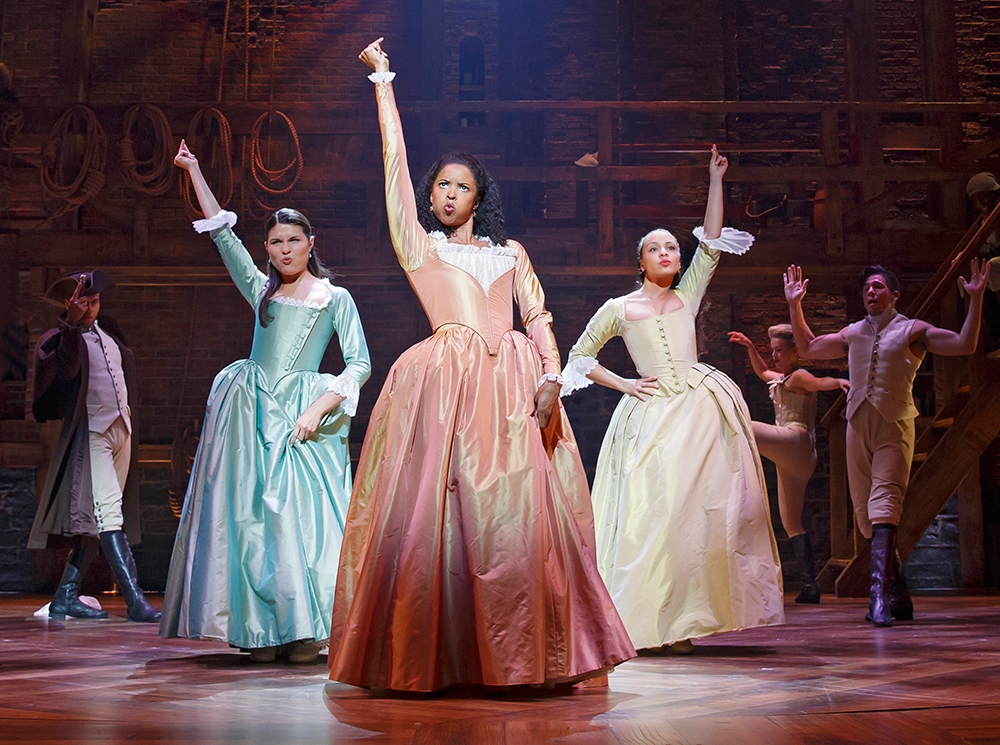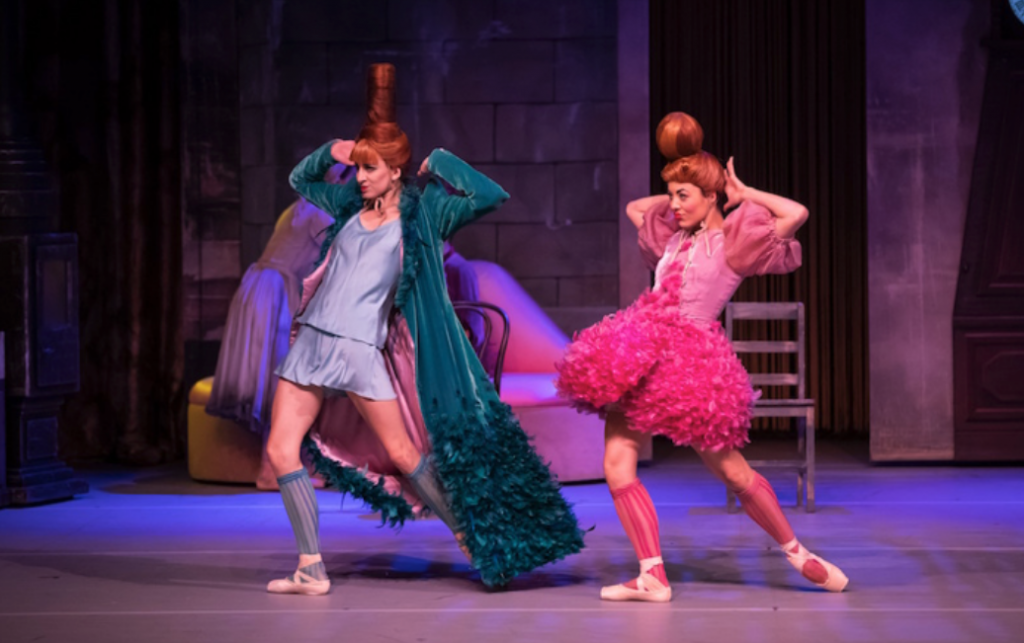
Don’t throw away your shot to see ‘Hamilton’ on Disney+
Many people haven’t had the opportunity to see the iconic and award-winning ‘Hamilton’ at the Richard Rodgers Theatre on Broadway. Instead, theatre nerds from across the globe had been waiting in anticipation for the professional recording of ‘Hamilton’, which was originally scheduled to be released in cinemas on the 15 October 2021. However, in response to COVID-19, and theatres and cinemas closing all over the world, thespians were given their shot to stream the production on Disney+ on 3 July 2020.
‘Hamilton’ is an award-winning musical, based on the life of American Founding Father, Alexander Hamilton; but that isn’t just what made the show a cultural phenomenon. Creator, composer and leading man, Lin-Manuel Miranda, was passionate about inclusive casting for the Founding Fathers, ensemble and other historical figures that appeared in the musical. He used his signature composing style by incorporating Rap, Hip-Hop, R&B, Pop, Jazz, and Soul into the musicals’ sound. As such, this ground-breaking production and its revolutionary music pushed against racism, especially with the lack of representation of people of colour in society and in the theatre. This led to ‘Hamilton’ achieving both critical acclaim and box office success.
The filmed version of ‘Hamilton’ not only provides visuals for those who’ve only listened to the cast album but even gives a new perspective for the lucky few who have seen the production live. With countless different camera angles, including both overhead and shots from the back of the stage, filming the show has added a different perception. The recording was completed in three days, with performers having to present the musical numbers multiple times; so there’s plenty of different layers to this new version.
It’s worth noting that film is an entirely different medium to the magic of live theatre and, therefore, will have varying effects as it can both aid and hinder the overall audience experience. One thing Disney+ ‘Hamilton’ gets right is its up close and personal scenes. When sitting in a theatre one’s sightline might be obscured by the rows in front. As such, the filmed version captures magic and moments audiences may have otherwise missed. The cameras can enhance facial expressions, scene changes and chemistry, otherwise overlooked if sitting in the back row. While this offers a movie-like version and viewers are treated to a close-up of an actor’s expression, they are likewise missing out on the expressions of other actors and ensemble members on stage. The camera dictates what viewers are capable of seeing and when they should be seeing it, and the brilliance of the entire production value was sometimes lost.
One particular close-up shot, which everyone seems to be loving, was Jonathan Groff’s portrayal of King George III. This very entertaining performance was so quirky that the camera captures just how much Groff spits… and in HD too! Groff reflected on his on-stage spitting in an interview with Variety in 2019, stating “I spit a lot onstage. I’ve always been a spitter… I start sweating. I just get wet when I perform onstage. It is just what happens.” In ‘Hamilton’, the close-up saliva fest adds to Groff’s comedic delivery.

Although ‘Hamilton’ is a sung-through musical, there is one song with a section of dialogue. This song is also not recorded in the soundtrack at the choice of Miranda. He aimed to preserve this part of the performance as he believed its true impact can only be felt when audiences can see as well as hear the iconic dialogue. ‘Hamilton’ fans who may have seen the film already, will likely know where this scene takes place and its impact.
Another significant element in the show that is often completely missed during live versions (even unknown to those less familiar with the production), is the secret role of one ensemble member. This role, known as “The Bullet”, played by Ariana DeBose in the film, signifies death throughout the show. The Bullet is seen in crucial moments of the show, so keep close attention when DeBose is seen on the stage. This element also adds another layer to the overall production, when revisiting the musical experience.
‘Hamilton’ features a large and expansive set, which grows in the second act to signify the exponential change of America. A part of the staging that is quite prominently used throughout the show is the revolve. This adds a new visual element to the show and creates some magical moments throughout the production. One of note was during ‘Satisfied’ where the genius and creativity of Miranda’s composing and Andy Blankenbuehler’s choreography come to life. Miranda used both pre-recorded and live vocals throughout the song and Blankenbuehler used the revolve complimentary to circle movement around Angelica (played by Renée Elise Goldsberry) who remains stationary in the centre. Blankenbuehler’s choreography replays actions perfectly and seamlessly, and just as the intention suggests, the production is reversed in time.

The revolve is also used well in the song ‘Say No to This’. In this piece, the audience can see Hamilton, who is sitting stationary at his desk in the centre, as Maria Reynolds (played by Jasmine Cephas Jones) walks around him on the revolve. The effect makes it seem as though she is walking over to approach him, while other characters like Aaron Burr (played by Leslie Odom Jr.) and street lamp set pieces remain still.
Another interesting quirk within the musical is the double meaning of some characters. That is, during the second act four new characters are introduced into the storyline and portrayed by performers who previously play other important roles in the first act. This double casting and specific character changes are quite intentional and share connections and similarities to each performer’s previous character. For example, Daveed Diggs went from playing Hamilton’s French ally Marquis de Lafayette to Thomas Jefferson who, in contrast, was a Francophile and Hamilton’s rival. Anthony Ramos played John Laurens and Phillip Hamilton, who both (spoiler alert!) tragically die within the story. Jasmine Cephas Jones played Peggy Schuyler, the only Schuyler that Hamilton didn’t love, then transformed to Maria Reynolds, who is known for seducing and having an affair with Hamilton. And finally, Okieriete Onaodowan originated spy Hercules Mulligan and then Hamilton’s rival Founding Father, James Madison. These extra nuances add another layer to the overall ‘Hamilton’ experience.
For ‘Hamilton’ fans unable to journey to Broadway, the filmed version allows you to finally see the show come to life and put action to the soundtrack. Being able to see the performers close up and observe their emotions and thoughts through their faces is truly magical. Unfortunately, camera angles prevented the ensemble from being shown to their full merit. Theatre relies on the impact of the collective and it was unfortunate for some of this unified power to be understandably lost in the live recording.
For those who dream of watching ‘Hamilton’ on the stage in Australia, the live production will be coming to The Sydney Lyric in March 2021, pending COVID-19 restrictions. With the release and exposure of ‘Hamilton’ on Disney+, tickets will be selling quickly, so sign-up to the pre-sale ticket waitlist so you don’t miss out. Tickets go on sale on the 1st of September 2020.
‘Hamilton’ is currently available to stream on Disney+. It is not yet determined when the production will be removed from the playlist, so don’t throw away your shot to witness Broadway from the comfort of your own home.
Photos Sourced via Playbill






